




Stephanie Boyle and her Ector farm family bring irrigation to fruition

















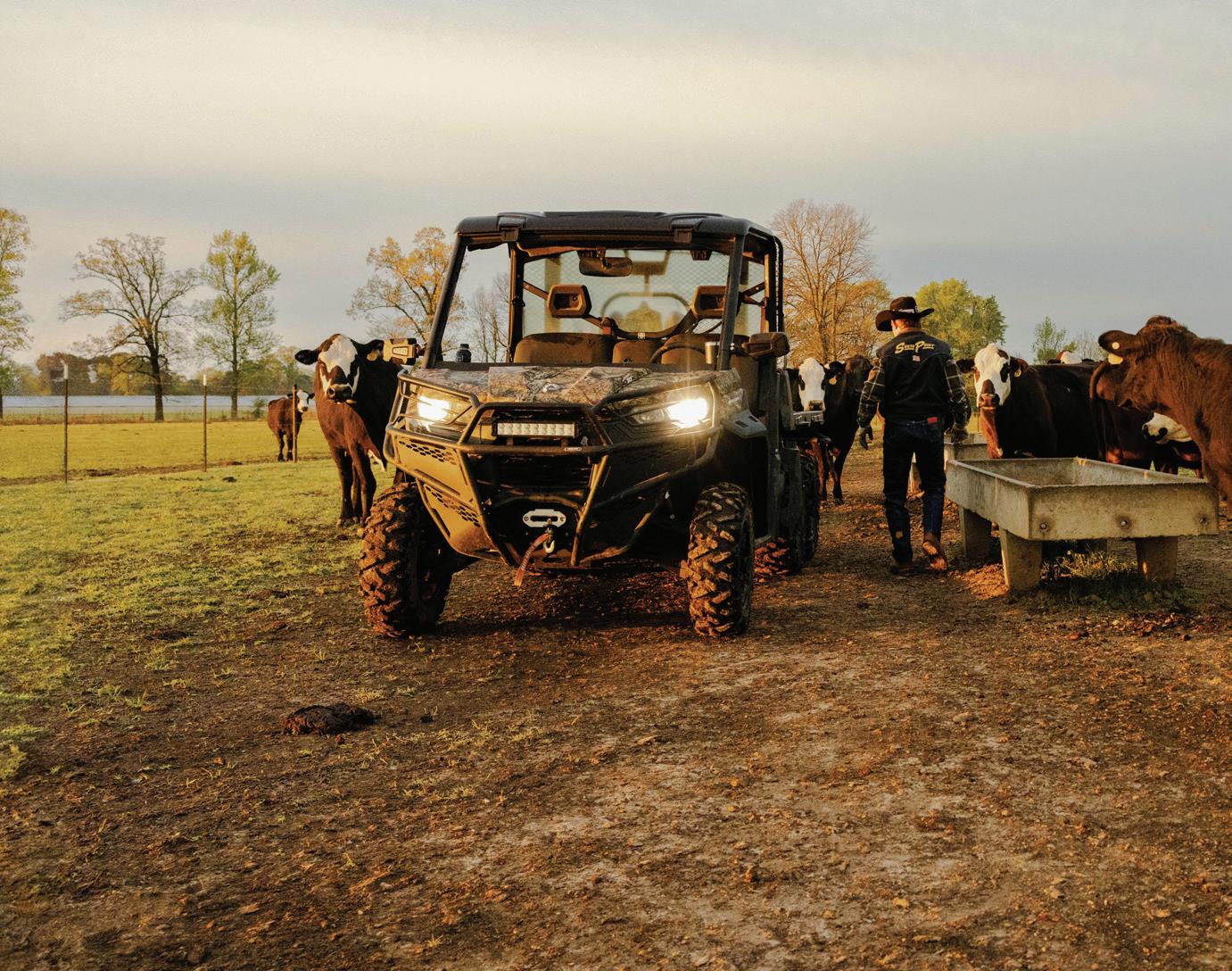




















A Farmer’s Viewpoint Don’t Give Up On Smaller Farms by Kevin Hursh
Farm Automation On the Rise by Lisa Kopochinski
Scott Shiels
PAMI Eyes Upcoming Technologies in Agriculture by Becky Zimmer
Those Wily Weeds One Wish Wouldn’t Be a Dandelion by Tammy Jones
Spraying 101 Nozzle Selection for See & Spray Select Spot Sprayers by Tom Wolf
Paul Kuntz
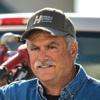




30 & 31, 2024
Join us in exploring the future of our industry through innovation, demonstration & education.
Don’t miss out on:
• 40+ expert educational sessions
• Live field demonstrations
• 100+ interactive exhibits
• 110+ crop plots
• Special events including a crop-focused field day & networking!
GET YOUR TICKETS AT AGSMARTOLDS.CA


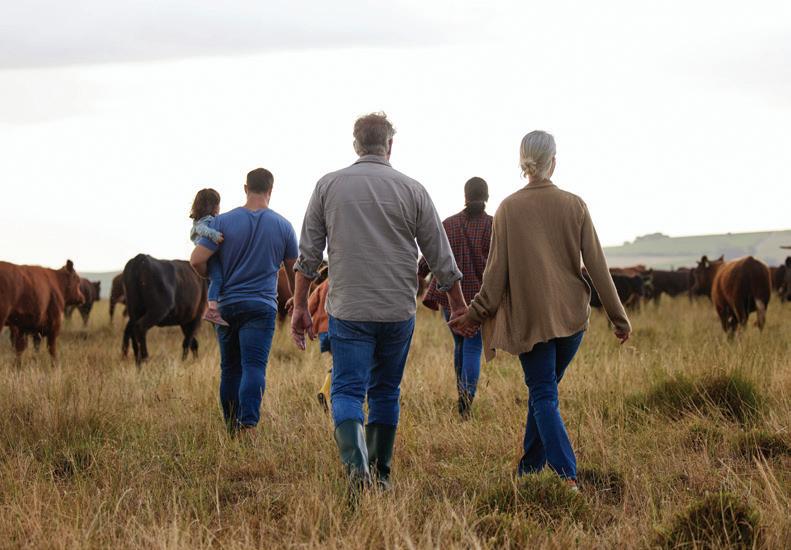

Kevin Hursh is one of the country’s leading agricultural commentators. He is an agrologist, journalist and farmer.
Kevin and his wife Marlene run Hursh Consulting & Communications based in Saskatoon. They also own and operate a farm near Cabri in southwest Saskatchewan growing a wide variety of crops. Kevin writes for a number of agricultural publications and serves as executive director for the Canary Seed Development Commission of Saskatchewan and the Inland Terminal Association of Canada (ITAC).
Twitter: @KevinHursh1
In this era of big farms – really big farms and mega farms – it’s easy to question whether your operation is large enough to be relevant. Furthermore, is it large enough for the next generation should they want to farm?
We tend to delineate farm size in acres when really gross income or better yet net income would be a more meaningful measure. Soil zone, soil quality and cropping mix all play big roles thereby making seeded acres a less useful measurement.
Is the land owned or is a lot of it rented? Farm Credit Canada came out with a recent analysis showing it’s often cheaper to rent land than to pay the borrowing costs for buying land. This is important for cash flow, but if land prices continue to increase, owning has a lot more long-term potential than renting.
As someone with a modest acreage in the semi-arid region of southwest Saskatchewan, I’m a bit defensive on the farm size issue. I’ve talked to suppliers at trade shows and after I answer their question about acres farmed, they quickly turn their attention to other prospects. They know I’m not going to buy a million-dollar tractor, combine or seeding outfit.
Many smaller acreage farms are profitable and provide a good standard of living for the family or families involved. However, it’s easy to feel irrelevant. Larger operators looking to buy or rent your land can often push this mindset.
For what it’s worth, here are some of my thoughts and strategies for keeping a smaller farm viable.
First of all, don’t try to keep up with the neighbours when it comes to newer and bigger equipment. Just make the purchases and upgrades that make sense for your operation. Many farms, both small and large, have too much money per acre invested in iron. This higher fixed cost is a big drag on profitability.
Publishers
Pat Ottmann & Tim Ottmann
Editor
Lisa Johnston
Design
Cole Ottmann
Regular Contributors
Kevin Hursh
Tammy Jones
Paul Kuntz
Copy Editor
Scott Shiels
Tom Wolf
Nerissa McNaughton
Sales
Pat Ottmann pat@farmingfortomorrow.ca 587-774-7619
Nancy Bielecki nancy@farmingfortomorrow.ca 587-774-7618
Chloe MacEachern chloe@farmingfortomorrow.ca 587-774-7622
/farming4tomorrow
/FFTMagazine
/farming-for-tomorrow
/farmingfortomorrow
WWW.FARMINGFORTOMORROW.CA
Farming For Tomorrow is delivered to 90,720 farm and agribusiness addresses every second month. The areas of distribution include Manitoba, Saskatchewan, Alberta and the Peace region of B.C.
The publisher does not assume any responsibility for the content of any advertisement, and all representations of warranties made in such advertisements are those of the advertiser and not of the publisher. No portion of this publication may be reproduced, in all or in part, without the written permission of the publisher. Canadian Publications mail sales product agreement no. 41126516.

However, being prudent in your upgrades doesn’t mean no upgrades. Letting everything get old and worn out at the same time can be a formula for disaster.
Second, don’t just grow the crops that are easy. Crops with higher potential profitability usually require more effort or investment or carry a higher risk, but smaller operators can sometimes be in a better position to make them work.
Many small to medium-sized farms just stick to what everyone else is growing in their area, rather than looking for other opportunities. This year, if you can get seed, maple peas should be much more profitable than yellow peas or even green peas. Green lentils, although more prone to quality downgrades if there’s a delayed harvest, look far more profitable than red lentils.
What’s profitable one year might be a dog the next. This is especially true of smaller acreage crops where production can go from feast to famine and back again. All types of mustard have been very profitable the past couple of years, but that market has taken a major downturn.
Market analysts preach this all the time, but you really do need to know your cost of production to make proper decisions on what crops to grow and when to price them. Too many farms just put the same mix of crops in the ground every year and then hope for profitable prices after harvest because they’re afraid to pre-price anything.
An increasing number of buyers are looking for special attributes or production practices and are willing to pay a
Finally, look for your edge. What are you and your farm particularly good at? Maybe you have the advantage of family labour or you’re set up to clean seed. Maybe you can run another business while also farming.
premium. Gluten-free oats are an example. Another is peas produced without a pre-harvest herbicide application.
Look for investments that can provide an advantage. For instance, do you have irrigation potential on any of your land? Establishing irrigation is expensive but it has become less expensive relative to rapidly escalating land values.
Finally, look for your edge. What are you and your farm particularly good at? Maybe you have the advantage of family labour or you’re set up to clean seed. Maybe you can run another business while also farming.
Small to medium-sized farms may sometimes seem like an endangered species, but with resilience and imagination, they are going to be around for a long time.


There’s a future on the land in Alberta and it’s in good hands. Like those before them, the next generation of producers will drive innovation and change, nourishing and protecting the land while feeding the world.
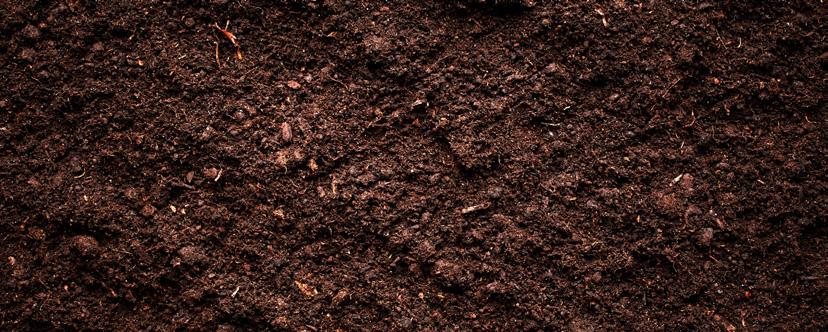
PROUD TO GROW AGRICULTURE IN ALBERTA




Scott Shiels
Scott grew up in Killarney, Man. and has been in the grain industry for 30 years. He has worked with Grain Millers Canada for 10 years and manages procurement for both conventional and organic oats for their Canadian operation. Scott is an elected board member for Farm and Food Care Saskatchewan and sits on several other committees on both the organic and conventional sides of the oat industry. Scott and his wife Jenn live on an acreage near Yorkton, Sask. Find out more at www.grainmillers.com.
This fall will mark my 32nd harvest since I entered the agriculture industry. Over the course of those many moons, an amazing amount of transformations have occurred. The size and cost of farm equipment has gone through the roof, and with that, or because of that, farm sizes have also grown exponentially. Long gone are the days of a 2,000-acre or 3000-acre farm being a decently large operation. Now, 5,000 acres is likely closer to the average size, with many farms expanding to well over 10,000 acres on the Prairies. Of course, along with the growth in the size of farms, there has been a massive change in equipment and farming practices over that time frame. It is not uncommon today to see 80-foot air drills being pulled by 600-horsepower tractors with giant seed and fertilizer tanks out back.
While farms and equipment have grown immensely, one thing that hasn’t is the number of elevators and buyers in the country. Again, back 30-plus years, nearly every community had at least one grain elevator, and even tiny communities often had three or four places to deal grain. Grain company consolidation, and the advent of the concrete inland grain terminal, reduced the number of elevators considerably, which led to less marketing options in many areas. With that came the disconnect between seller and buyer. The once thriving elevator office coffee shop has been replaced by the internet and cellphone. The personal relationship with what was sometimes the only person you sold grain to has been pushed into relative obscurity. All the while, opportunities for brokers and consultants have flourished, and as farmers themselves found new ways to market their crops, they have forged relationships that have rivalled the old ones they once had with local elevator managers.

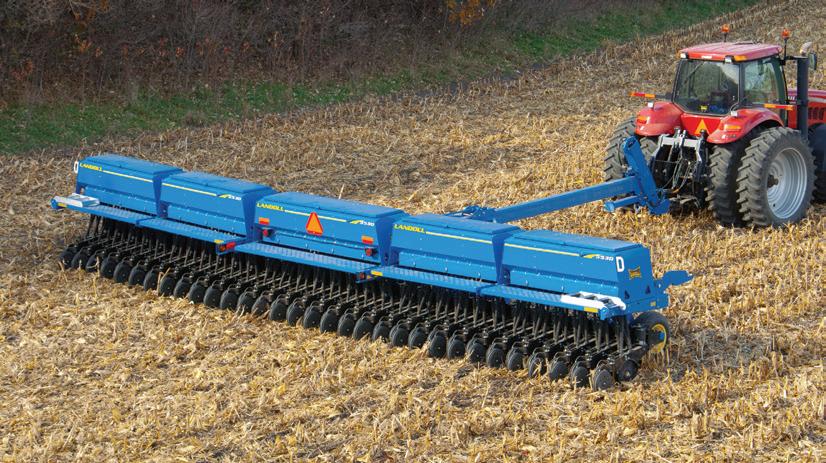


Many producers are making the switch to linear box affordability with the versatility to accurately plant high yielding primary crops as well as cover crops that produce valuable nitrogen and protect against soil erosion. Cover crops require the same seeding accuracy and depth control as primary crops. Achieving this requires the accuracy of the exclusive Fluted Seed Meter and the industry’s first Pneumatic Down Pressure opener system. From 10’ through 50’ widths, the ruggedly built Landoll 5000 Series Drills deliver linear box affordability with unmatched standability.
Call us for more information or visit us online at www.Landoll.com ®

So, not to be controversial here, I want to state that all brokers and consultants are not created equal. While some go above and beyond to ensure complete client satisfaction for their fees, there are others who disappear once the paperwork is done, or at the first sign of any kind of dispute.
So, not to be controversial here, I want to state that all brokers and consultants are not created equal. While some go above and beyond to ensure complete client satisfaction for their fees, there are others who disappear once the paperwork is done, or at the first sign of any kind of dispute. Often, the issue can be easily resolved, but sometimes there needs to be
mediation, and in my mind, that should be the job of the person who put the deal together, as that is what they are getting paid to do.
If you are looking for either a brokerage company to deal with, or a consulting company to hire on an annual basis, there are definitely a lot of ways to ensure you are working with the right people. Being that I have been around this game a long time, I am often called and asked for my opinion on other buyers, traders, brokers and consultants, and I am sure that I am not the only one. This is one of the best ways, in my mind, to ensure you are collaborating with someone the industry respects and finds easy to work with.
The other thing that has changed over the years is the development of the value-added portion of the ag industry on the Prairies. We now have oat and wheat mills, canola crush plants, malting barley facilities, pulse processors and too many more options to list off. These facilities have given producers the option of dealing straight with the end user of their grain, and many farmers have developed great personal and business relationships with the buyers at these companies. Forging these strong relationships with our customers kind of takes me back to the “old days” of the ’90s. Wow … the ’90s are the old days!
Until next time…


�uilt to last� A�rasion�resis tant �A������ steel
�or e�tended �ear.
�educe docka�e and rotor loss.

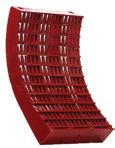
• Reduce dockag

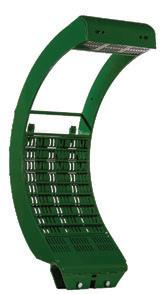

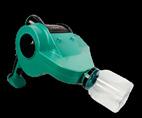


Save on �uel and improve your sample �uality.

�uick � easy�to�chan�e split �rame desi�n �or S�S�S Series com�ines.
Innovative bar-and-grate style concaves that increase your harvest capacity, speed and efficiency.
Specialty concaves �or all types o� crops.
• Built to last- Abrasion-resistant (AR-200) steel for extended wear.
• Reduce dockage and rotor loss.
Without checking and calibrating loss sensors, there’s no way to know how much hard work is being lost. This is critical for combine-automation systems,which will not work without calibrated loss sensor settings. The Bushel Plus SmartPan System™ helps you collect and calculate accurate combine losses in just minutes. Our magnetic drop pan easily attaches to any combine and drops safely and remotely using a remote control or mobile app. The Air Separator quickly cleans samples, and the SmartDrop™ App measures results using innovative and intuitive loss analysis. With the Bushel Plus SmartPan System™, you can take your first, major step in
field. Allows you to quickly collect a crop sample to test moisture before harvesting. Provides accurate results without wasting your time and fuel, bringing the big combine to the field. Works with wheat, barley, canola, sorghum, oats and peas.
�ithout checkin� and cali�ratin� loss sensors, there�s no �ay to kno� ho� much hard �ork is �ein� lost. �his is critical �or com�ine�automation systems,�hich �ill not �ork �ithout cali�rated loss sensor settin�s. �he �ushel Plus SmartPan System™ helps you collect and calculate accurate com�ine losses in just minutes. �ur ma�netic drop pan easily attaches to any com�ine and drops sa�ely and remotely usin� a remote control or mo�ile app. �he Air Separator �uickly cleans samples, and the Smart�rop™ App measures results usin� innovative and intuitive loss analysis. �ith the �ushel Plus SmartPan System™, you can take your �irst, major step in controllin� com�ine losses.
• Save on fuel and improve your sample quality.
• Quick & easy-to-change split frame design for STS/S Series combines, Case IH 88 Series and New Holland CR Twin Rotor 22”.
• Specialty concaves for all types of crops.




One system - 4 simple steps to save you thousands of dollars with North America’s top grain loss management system. visit us at BUSHELPLUS.COM for more information today!


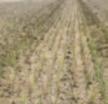


Separate Calculate

By Becky Zimmer

The recent announcement by the federal and Saskatchewan government of $5 million over five years for the Prairie Agricultural Machinery Institute (PAMI) was welcome news for the agriculture research firm. Awarded under the Sustainable Canadian Agricultural Partnership, what’s coming next for Canadian and global agriculture is a minefield of data, innovation and big ideas.
Carl Havixbeck, technical sales representative based at PAMI’s Portage la Prairie office, is very excited for what the future holds as the agricultural technological opportunities continue to grow, especially with PAMI’s own finger on the pulse of innovation. Times have changed in the past 50 years of testing and researching agriculture.
“How do we evolve with agriculture to keep up and still bring value to the clients that we serve?” he asks.
Autonomous Machinery – Who’s in the Driver’s Seat?
Autonomous tractors are no longer a hypothetical idea. Havixbeck notes many companies are bringing their plans for autonomous vehicles into the near future with three prominent methods coming into play.
The first one, says Havixbeck, is bolt-on technology that can turn most machinery into an autonomous one. As a producer, this means not having to go out and buy a new $600,000 to $1-million machine to join an autonomous
“It’s got the sensors and the controls and all the technology embedded in it, so that it can be bolted on to probably any newer tractor, and it’s now an autonomous tractor, and no longer requires an operator.”
- Carl Havixbeck
future. While not yet available on the market, John Deere’s 2022 acquisition of patents and intellectual property from California-based Light has meant they are one step closer to offering autonomous machinery to their consumers.
“It’s got the sensors and the controls and all the technology embedded in it, so that it can be bolted on to probably any newer tractor,” says Havixbeck, “and it’s now an autonomous tractor, and no longer requires an operator.”
Other companies are on the same path, he adds. Prairiebased companies MoJow Autonomous Solutions and Buhler





If you have deregistered, expired or inherited pesticides or old farm animal medications, please store and then bring to a Cleanfarms event for safe disposal.



ELIGIBLE MATERIALS
• Agricultural/ Commercial Pesticides: old, obsolete, or unwanted pesticides with a Pest Control Product (PCP) Number on the label.

• Animal health meds: anything with a Drug Identification Number on label.
PREP STEPS
1. GATHER – Unwanted ag pesticides & obsolete animal health medications.
2. PLACE – In a sealable or spill-proof container.
3. RETURN – Check Cleanfarms.ca to find where & when you can return eligible products to a collection site in Fall 2024.

Industries’ Versatile division are working together to develop sensors for existing tractors with MoJow’s EYEBOX TM controller system to operate steering, propulsion, exterior lights, ignition and activation of hydraulic remotes.
According to Havixbeck, the AgXeed, CLAAS and AMAZONE partnership is leading the way for cab-less AgBots, either working to shadow a manned machine or to run independently along a pre-programmed path. GUSS (Global Unmanned Spray System) has done this as well, especially in vineyards and orchards. Farmers have the ability to monitor up to eight machines from a tablet.
Drone usage has already been growing in the agricultural world, however, Havixbeck is seeing this as another method for autonomous field work. Swarm technology will have 30 to 40 machines working independently with specific, focused tasks within a field.
“They’re going to communicate with each other,” notes Havixbeck. “They’re going to share where they’ve been, what they’ve done, and it’s going to be really interesting to see how that evolves.”

Regulation is what is bottlenecking drone usage in the field. Chemicals now have to be registered for ground, air and unmanned aerial vehicle application, explains Havixbeck. “That is the biggest hurdle before drones can be used for input applications, but drones are going to take off,” he says, the pun fully intended.
No matter how many future robots roll into the field, Havixbeck doesn’t see autonomous equipment replacing boots on the ground. There still has to be the human element of dealership knowledge and repairing what needs to be fixed, whether from the software or hardware side of the equation.
With all the digital growth within the ag sector, PAMI project lead Dena Burnett, based in Humboldt, Sask., says that any forward-thinking farmer is going to need an IT specialist, not just to deal with the individual headaches and challenges that autonomy brings to the field, but also to interpret the mountains of data that’s already being collected, both on a macro and a micro level.
The amount of data inundating farmers can be overwhelming. Dealerships and original equipment manufacturers are collecting data on everything from machinery performance and maintenance needs to crop, soil and climate information. A singular farmer can have all the data in the world at their fingertips, but if they can’t make sense of it, it will be of no practical use.
Adding someone to their team who understands the data is a valuable partner that can make sense of the numbers.
“The farm manager can trust that those decisions came from valid, trusted data sets and are put in front of the right people to make the right decisions,” says Burnett.
With artificial intelligence now adding its own assistance and challenges, the ag industry has to be careful to not stop appreciating the human components of data. Machine learning and AI go hand in hand, says Burnett, as the machine has to learn before being able to present its own decisions.
“Garbage in, garbage out,” she says. “If you don’t have reliable, predictable, evidence-based data going in, you’re not going to have reliable data coming out…. Generally, when we’re collecting data – collecting our carbon content, our nitrogen content, our water quality – we’re also training that algorithm to recognize the good and the bad.”
As a kid, Havixbeck says his dad knew all he needed about his 1,000 acres, but that is not the case anymore. Family members own more expansive farms, and they’re purchasing
AND
FEATURES

REQUIRES NO DPF, NO REGENERATION,
HIGHLY EFFICIENT, CLEAN-BURN ENGINE TECHNOLOGY REQUIRES NO DPF, NO REGENERATION, NO HASSLE
WIDE RANGE OF LOADER-END OPTIONS AND ATTACHMENTS
STANDARD FEATURES
ADVANCED MANUFACTURING PROCESSES, PRECISION POWDER COAT PAINT TECHNOLOGY AND EXTENSIVE ENDURANCE TESTING
40º ARTICULATION WITH HIGH MOUNTED STEERING CYLINDERS AND HOSES CLAMPED AWAY FROM PINCH POINTS
FLOOR TO ROOF WINDSHIELD GLASS AND SLOPED REAR HOOD HELP IMPROVE VISIBILITY AND SITE SAFETY
FLOOR TO ROOF WINDSHIELD GLASS AND SLOPED REAR HOOD HELP

n JCB CommandPlus cab for best in class operator space and comfort

CommandPlus cab for best in class operator space particulate filter (DPF) meaning regeneration
n No diesel particulate filter (DPF) meaning no periodic regeneration
n JCB CommandPlus cab for best in class operator space and comfort
n No diesel particulate filter (DPF) meaning no periodic regeneration
n High torque at low RPM for reduced fuel consumption and increased productivity
n Chassis-integrated tanks to minimize the chance of impact damage
low RPM for reduced fuel consumption and productivity
n High torque at low RPM for reduced fuel consumption and increased productivity
n Single-piece hood design for fast access to the entire engine bay
Chassis-integrated tanks to minimize the chance of hood design for fast access to the bay
n Chassis-integrated tanks to minimize the chance of impact damage
n JCB’s LiveLink system tracks machine efficiency, reports location and status, and delivers service alerts
n Single-piece hood design for fast access to the entire engine bay


n JCB’s LiveLink system tracks machine efficiency, reports location and status, and delivers service alerts
system tracks machine efficiency, reports status, and delivers service alerts
EDMONTON BRANCH 18420 118A avenue Edmonton, AB (780) 474-9900 CALGARY BRANCH 8010 40 Street SE Calgary, AB (403) 301-0041





thousands of acres at a time without knowing anything about them. Farmers’ history and engagement with their land is just not there, he adds, and the decision-making is not going to be done from the tractor cab as farms continue to grow.
Continuity of data is another important aspect of farming for Havixbeck. With all the technological growth happening within the bubbles of different companies, more has to be done to ensure machines can talk to each other. “When someone is out in their field with their John Deere and New Holland combines, their Case IH sprayer and DJI drone, they also need a platform that can ‘ingest’ all the data and make it usable.”
However, cautions Brunett, talking about data collection may be putting the grain cart before the tractor in a lot of cases on the Prairies.
Living in an urban environment, Burnett takes broadband and connectivity for granted, but some Prairie regions are lacking reliable telecommunication service. According to the Canadian Radio-television and Telecommunications Commission’s (CRTC) most recent Communications Monitoring Report from 2019, 26.7 per cent of rural households relied solely on wireless technology and 65.4 per cent of rural households met the target of 50 Mbps download and 10 Mbps upload broadband speeds. LTE cellular networks were available in only 35.4 per cent of rural communities and only 88.8 per cent of major roads and highways had cellular coverage.
The industry is quick to talk about “all the sexy things that come with algorithms,” says Burnett, but often forget not everyone can adopt these practices. “The need for reliable rural broadband infrastructure, frankly it should already be done. If it’s not currently being adopted well, that needs to be adopted yesterday.”
Burnett is seeing clear distinctions between what farmers are willing or able to adopt for electric vehicles. For light yard duties or hauling from point A to point B, electric is the way farmers are going about the once-a-week tasks, a few hours at a time. That will allow for those long charge times after the small jobs are done, she adds.
For something that will last long hours in the field, Burnett believes farmers are still going to need an internal combustion engine, but hydrogen is now a strong contender to replace diesel. With only a few swaps in engine parts, turning a diesel engine into a hydrogen engine will be an easier feat than changing an entire fleet to electric.
“When someone is out in their field with their John Deere and New Holland combines, their Case IH sprayer and DJI drone, they also need a platform that can ‘ingest’ all the data and make it usable.”
- Carl Havixbeck
“You don’t need to retrain your mechanic,” she says. “They know what that equipment looks like and they know how it should behave. Whereas if the entire fleet was moved to electrical vehicles, well now you’ve got to change your entire maintenance infrastructure because those engines are so different.”
Beyond evaluating the merits of A versus B in alternative energies, PAMI has already done vibration testing on battery designs. With no electric emissions, Havixbeck says the mining sector is looking to go fully electric underground, and clients want to know how much the batteries can withstand.
“We can actually put sensors, like accelerometers and strain gauges, on a piece of equipment, collect actual data and put it in a simulation drive file in our testing equipment here at Portage to simulate a real-life experience that a vehicle would experience in a mine.”
Putting that into everyday applications, this tangible data can be used to measure damage and electric vehicles’ life cycles when put under stressful situations, like hitting potholes.
Finding these variables to test and measure, PAMI is taking these innovations and evaluating change using an engineered and scientific approach. Using this information, they can connect policymakers to farmers and commodity groups; “the boots on the ground,” says Havixbeck, to be another voice for strong agricultural policy. “With so much in the hopper, the Canadian agriculture industry needs to tell their story of efficiency.”






By Angela Lovell

The Ector family has been successfully navigating change on their family farm for five generations.
Some of those changes have come as a surprise, such as moving the original Ector homestead to allow the creation of Lake Diefenbaker in the early ’60s. This resulted in a relocation to a different site, and eventually Lionel and Melody Ector (the fourth generation) moved the farmyard once again to its current location about 10 kilometres north of Elbow, Saskatchewan.
For the most part, changes have been well planned out, including the focus of the last two generations to grow the farm through land ownership, rather than renting, to its current 13,000 acres. Instinctively, the Ectors know that in order to find the best solutions to make their farm adaptable and sustainable for the long-term, they need to put in a lot of thought, effort and planning.
A new direction
A prime example is the latest – and arguably one of the biggest – changes: bringing irrigation to the farm.
After successive years of drought (2024 could be the fifth), the Ectors began to seriously look at irrigation as a way to make their farm more resilient, while also giving them an opportunity to add value by growing new, specialty crops such as black beans and pinto beans.
“Irrigation is huge for our farm,” says Stephanie Boyle (nee Ector), one of the three, fifth-generation siblings taking over the farm. “It creates new opportunities and stability, it helps us better manage risk. We’re not as reliant on crop insurance. It’s a game-changer.”
Boyle came back to farm full time about four years ago after completing a bachelor of commerce degree at the University of Alberta and working with MNP to obtain her chartered professional accountant designation. With her accounting experience and interest, it was a natural fit for her to assume the main financial role on the farm, but she has also been heavily involved in bringing the irrigation project to fruition.
It’s been a complex process requiring multiple approvals and applications with various provincial ministries, including an irrigation certificate for each quarter of land that is to be irrigated, a water rights licence, as well as easements to cross neighbours’ lands and other land control permits for things like municipal road crossings. As private irrigators, they also had to draw up construction plans for an inlet site on Lake Diefenbaker, hire a general contractor and put in a lot of sweat equity to build the system.
“This has all been about timing and opportunity, with the right people in place,” Boyle says. “When we started planning
“Irrigation is huge for our farm. It creates new opportunities and stability, it helps us better manage risk. We’re not as reliant on crop insurance. It’s a gamechanger.”
- Stephanie Boyle


“Irrigation has changed a lot, too. It’s way more efficient than it used to be. You can run a lot of the equipment on your phone through apps, but there’s still lots of work that you need to do just to make sure the farm is set up correctly.” - Stephanie Boyle
this, commodity prices were at record highs, interest rates were at record lows. So, that timing worked in our favour but we were prepared for it as well. We had the equipment, we had enough storage, so it’s not like we just decided to irrigate, and now we have to put up a bunch more bins. We worked into it to make sure we had the infrastructure in place to support our vision.”
Once all the approvals and licences were in place, there was the next learning curve for how to actually run the system. Boyle’s brothers, Michael and Stuart, and their father, Lionel, have spent countless hours setting up the system and handling the ongoing maintenance.
“Irrigation farming is different than dryland farming so it’s getting to know the little tips and tricks, and how to use the system to its full capabilities,” Boyle says. “Irrigation has changed a lot, too. It’s way more efficient than it used to be. You can run a lot of the equipment on your phone through apps, but there’s still lots of work that you need to do just to make sure the farm is set up correctly.”
At the moment, about one-third of the 13,000-acre farm is irrigated, but the plan is to eventually irrigate the entire farm and continue to expand into more specialty crops such as potatoes and vegetables.
“In our drought last year, we had fields that were growing over 100 bushels an acre and the dryland corners that didn’t get water from the pivots were about 10 bushels,” Boyle says. “That shows how poor our crops could have been. It’s helping to create stability, and it’s something that we can bring to the bank, and we can bank on it now too because we have the ability to grow a crop and hit our targets as to what we like to plan for every year.”
Standard features include inside and outside temperature and humidity, barometric pressure, wind speed and direction, rainfall, dewpoint, wind chill, forecast, moon phase, alarms, and more.







“We worked with our accountants and lawyers to structure our farm for succession planning and transition to the next generation. With each of us having our own company, we all have the flexibility to do our own thing, but we can work together and be stronger than we would be as individual businesses.” - Stephanie Boyle
The family’s transition plan is complex, but it’s been well orchestrated, and Boyle has been instrumental in helping to formalize and implement it. The entire process really started when grandparents Stuart and Lorraine set up the company, Stulor Farms, which their son, Lionel, eventually purchased and still owns today.
Each of the three farming siblings (they also have a sister who does not farm), have their own independent companies that hold their individual assets such as land and equipment.
Wild Lily Farms Ltd. is owned by older brother, Michael (34), and Looking Glass Farm Ltd. belongs to 28-year-old Stuart, who is also a Red Seal journeyman ag mechanic. Boyle and her husband, Jason, own E16 Farms Ltd., where they are raising their two children, Farrah, 3, and Felix, 18 months, who will welcome a new baby sibling this August.
“We worked with our accountants and lawyers to structure our farm for succession planning and transition to the next generation. With each of us having our own company, we all have the flexibility to do our own thing, but we can work together and be stronger than we would be as individual businesses,” Boyle says. “My siblings and I bring different aspects to the table, which is nice because then we can complement each other.”
Lionel and Melody also started a pulse and spice export company on the home farm called Diefenbaker Spice and Pulse (DSP) that is now solely owned by Melody, as Lionel has
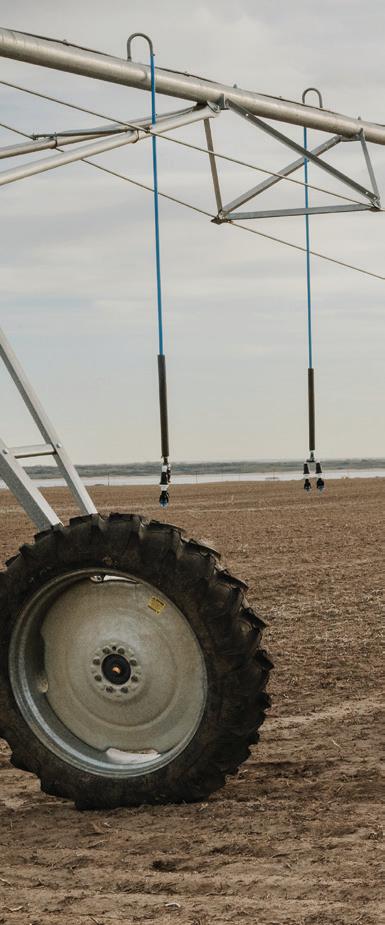

“Show the banker your ideas, come up with a business plan, show them your budget, your projections. And if you are trying something new, don’t be afraid to try it. Get out there, there are people who have done it before.” - Stephanie Boyle
concentrated on the farm operation over the past decade. Boyle is also CFO for that company and it’s likely she will take over operation when Melody retires, in addition to continuing to run E16 Farms.
All three of the Ector siblings have brought their various skills and expertise to the farm and although they each have the freedom to run their own show, they share the same goals and talk through major decisions. What’s key, Boyle says, is that they are all committed to the fundamentals: knowing their numbers, believing in themselves and building relationships.
“You want to find bankers, accountants, lawyers that believe and trust in you, and you want to be able to prove to them


that you have a plan and you’ve been able to fulfil it,” she says. “Show the banker your ideas, come up with a business plan, show them your budget, your projections. And if you are trying something new, don’t be afraid to try it. Get out there, there are people who have done it before.”
When it comes to building relationships, look beyond your local network, Boyle says.
“You’ll get ahead much further by going out and meeting people, working and attending different farmer events, even peer groups,” she says. “That’s where you’re going to learn and grow the most because if you only look in your area, and only see what’s been done there, it’s harder to open up your horizons.”

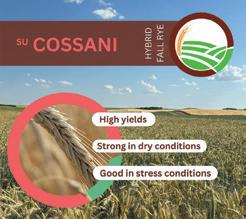








Paul Kuntz
Paul Kuntz is the owner of Wheatland Financial. He offers financial consulting and debt broker services. Kuntz is also an advisor with Global Ag Risk Solutions. He can be reached through wheatlandfinancial.ca.
When a story is in the news cycle, it is easy to remember the details and understand the implications for our business. The story never lasts forever. Eventually it dies out and the media moves on to another topic. That does not mean the implications are gone. The story of rising interest rates falls into this category. Back in 2022, when rates started to rise, this was ever present in our daily news.
I went back to an article I wrote in the fall of 2022 about interest rates. I had made some predictions, so I wanted to see how close I was to what is actually happening today.
The first thing I got wrong was how high rates would go. When I wrote the article, the Bank of Canada had raised their overnight rate from 0.5 per cent to 2.5 per cent. Although 2.5 per cent is not a big number, relative to the starting point, it is a huge increase. The prediction was that rates would continue to go up another 1.25 per cent for a Bank of Canada overnight rate of 3.75 per cent which would create a prime rate of 5.95 per cent.
Interest rates continued to increase until July 2023. By that point, the Bank of Canada rate was five per cent which created a prime lending rate of 7.2 per cent. Rates had shot up well past the predictions.
The next prediction was that by late 2024, this increase in rates would cool the economy and inflation would be back to the two per cent target. This prediction seems to be closer. Inflation is in the twos but still at the higher end. I am of the belief that inflation will have to fall below two
per cent into the 1.9 per cent or 1.8 per cent range before the Bank of Canada lowers rates. In my previous article, I referenced the early 1990s as the last time we saw inflation get high and the government attack it. After a period of rising interest rates, inflation fell to 1.6 per cent in January 1992. I think we are going to have to see numbers like that before rates come down.
When the inflation number is calculated, 30 per cent of it comprises housing costs. This part of the equation creates two concerns. First, the cost of housing is increasing which is keeping the inflation number high. The increase in the cost of housing is not tied to the robust economy directly, but is influenced by immigration. We have more people coming to Canada than we have houses, so the cost goes up. The other factor in the housing calculation is mortgage interest costs. The fact that we have higher interest rates causes inflation to stay high not letting interest rates get lower. To get the housing component of the inflation rate to go lower will be difficult.
Another miscalculation was the timeline. When rates shot up in mid-2022, we all thought that was the end of the rate increases and we just had to wait a couple of years for inflation and the rates to come down. This was incorrect. Rates kept going up until mid-2023. Now we need to readjust our timeline.
Another miscalculation was the timeline. When rates shot up in mid-2022, we all thought that was the end of the rate increases and we just had to wait a couple of years for inflation and the rates to come down.
It will be mid-2025 before we see any reprieve.
We can look at a couple of strategies to mitigate higher interest costs. First and foremost is operating debt. When prime is at 7.2 per cent and you have an operating line of credit at prime plus three per cent, that is a borrowing rate of 10.2 per cent. If you have $1 million of inputs purchased on a line of credit like this, your monthly interest cost is $8,500. You might think your credit rating is good and you have a great relationship with your retailer, therefore your interest rate will be much better. You’re wrong. If you buy from


I think the Bank of Canada is scared to make a move on rates
until they see more signs of cooling in the economy. There will be a large number of mortgages renewing in the next 24 months into higher rates, and some of these homeowners will see their rates increase over double. This may have an impact on slowing the economy and lowering inflation.
Nutrien, Cargill, Richardson or any independent using FCC Alliance credit, the rates will be close to what I am showing here. If you have a line of credit with your bank, there is a good chance it is at prime plus two per cent which is still 9.2 per cent. This will drive up your interest costs if you are using a lot of borrowed operating debt.
The simple answer to this problem is to have less operating debt. Use as much interest-free money from a cash advance as you can. Use the interest-bearing portion of the cash advance as well. The rate is prime less 0.25 per cent which is 6.95 per cent. If your farm has benefited from the higher commodity prices over the last few years, use your cash to buy as many inputs as you can.
The other part to rising interest rates that gets attention is mortgages. We will have to pay more interest when we buy land and also when our mortgages renew. When I wrote the previous article on interest rates, I recommended borrowers take a two- or three-year term on a mortgage, to be able to renew when rates are lower. I have been changing this recommendation.
Part of the problem is that shorter term rates shot up. If you want to have a two-year, three-year or four-year term on your mortgage, you will have to pay a premium. This means you are taking an extra risk to employ this strategy of timing the market. If you can get a five-year fixed rate for 5.25 per cent and the three-year rate is 5.9 per cent, this means rates
will have to be much lower in three years to compensate for the higher rate paid for those three years. I don’t think it will be worth it. I have been recommending clients take a five-year rate and carry on with life.
Our economy in Canada is still strong. The unemployment rate is still low. There is an abundance of jobs available. We are all still buying campers, sleds, quads and new vehicles. On top of this, we have the housing situation which is driving up home costs. I think the Bank of Canada is scared to make a move on rates until they see more signs of cooling in the economy. There will be a large number of mortgages renewing in the next 24 months into higher rates, and some of these homeowners will see their rates increase over double. This may have an impact on slowing the economy and lowering inflation.
From a farming perspective, my recommendation is to make decisions based on these rates staying around. Budget 5.5 per cent for a mortgage rate to buy land. Budget 8.2 per cent to buy equipment and 10.2 per cent to borrow operating money. This will create stability in your financial planning. If
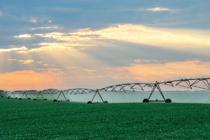
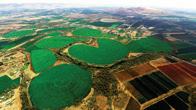






rates start to fall, then your plan will be fine. If rates stay the same, you will also be fine.
You will make/lose a lot more money based on the yield and price of your crop or the price changes in cattle versus the change in interest rates. If your farm is wildly profitable, I doubt it is because you made good interest rate decisions. If your farm is failing, I also doubt it is because of high interest rates. Failing or succeeding can be based on how much money you borrow, but I doubt the rate will be the deciding factor between success and failure. This is why I recommend taking a longer term on a mortgage and then forget about the rate and go make money. The same for operating debt: borrow as little as you can, do whatever you have to lower the rate and then move on to making money. This strategy will allow you to progress in your decision-making. Rather than stewing for days about where rates are going, just make a decision and move on.
Interest rates will go down. What we do not know is how much or when. Don’t forget about interest rates, but don’t let indecision slow the progress of your farm.



More economical and efficient than traditional cart methods, cart and grain automation can alleviate both spillage and cart operator stress
By Lisa Kopochinski

Technology advancements – such as cart automation – have progressed greatly within the last decade, making it increasingly possible for the farming industry to achieve much more in less time and effort.
Raven Cart AutomationTM is a great example of technology that is allowing farm operators to consistently achieve excellent results at higher productivity levels with less effort – across every operation and every square foot of the field.
“It’s about helping farmers do more with less,” says Raven product manager Matt Horne. “As more machine and agronomic functions become automated, the workload on the operator will become less and less to the point where they can leave the cab and be freed up to do other things.”
Horne explains the innovation for Raven Cart Automation was driven by the need to provide customers with a reliable, easy-to-use harvest assist solution.
“It uses a local radio connection to synchronize the tractor and harvester, instead of local Wi-Fi networks, which can be unreliable in the field. Raven Cart Automation’s radio-based sync adds system reliability that customers can trust. Additionally, the simple setup of setting a sync point means that customers can seamlessly have machines join or leave a job site without time-consuming configuration changes.”
The many key features of this impressive automation include:
• minimized grain spillage when unloading on-the-go, thereby maximizing profits.
• increased field efficiency by reducing slowdown events during the unload cycle in some cases.
• reduced operator training time and error.
• reduced miscommunication between operators; and
• less stressful events for tractor and combine operators (on average by 18 per cent and 12 per cent) across all crops and conditions tested, compared to operating manually.
“The unload cycle time is as good or better than a professional grain cart operator,” says Horne. “It also reliably syncs the cart and combine with radio-based connectivity. It can sync up to six grain carts and combine systems in one operation.”
Cart automation coordinates the path and speed of the tractor during an “unload on-the-go” operation. Once the tractor and harvester are in proximity, the tractor operator engages automatic steering and propulsion.
“Raven Cart Automation synchronizes the grain cart with the combine at distances within a 175-metre-long by 55-metre-

“The
unload cycle time is as good or better than a professional grain cart operator. It also reliably syncs the cart and combine with radio-based connectivity. It can sync up to six grain carts and combine systems in one operation.”
- Matt Horne
wide window,” explains Horne. “This syncs the heading and speed of the tractor with the heading and speed of the combine, putting full control of the unload process in the hands of the combine operator.”
Using the multifunction controller, the combine operator can nudge the grain cart forward or backward to fill the bin appropriately, so there is no need to speed up or slow down to change the sync position.
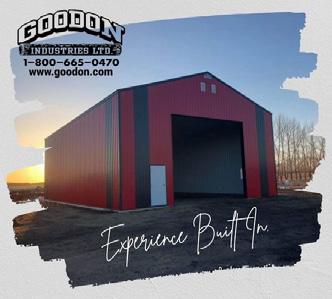

“There is no more manually adjusting rotor speed, fan speed, and concave, chaffer and sieve clearances. The combine does it according to outcomes already prescribed.” - Bergen Nelson
“Once the cart is full, the tractor operator can steer to disengage the sync and drive to the appropriate unload point.”
Bergen Nelson is the go-to-market manager at John Deere. He says John Deere’s machine sync technology creates a wireless network connection between the combine and the tractor pulling the grain cart, which increases productivity and efficiency.
“This technology enables the position and speed of the tractor to be exactly synchronized with the combine,”
he explains, “automatically controlling the speed and position of the grain cart, minimizing crop spillage when unloading, and improving efficiency of harvest logistics and increasing operator confidence.”
Additional automation is also available on John Deere combines, allowing operators to concentrate on the task at hand with less worry over settings and ground speed.
For example, the 2025 S7 series and X9 series combines are available with several technology packages from select and premium to ultimate. Available options in the ultimate package include harvest setting automation and predictive ground speed automation.
“Harvest settings automation helps operators get into the field faster by automatically setting concave clearance, fan speed, rotor speed, sieve clearance and chaffer clearance, all based on the combine model, crop type and geo-location,” explains Nelson.
After the operator selects limits for grain loss, foreign material and broken grain, the system automatically adjusts the five initial settings to stay within the selected limits. Once set, the combine automatically adjusts itself to deliver the performance the operator wants.

“There is no more manually adjusting rotor speed, fan speed, and concave, chaffer and sieve clearances. The combine does it according to outcomes already prescribed,” he says.
Predictive ground speed automation controls the combine’s ground speed based on crop height and biomass measurements taken pre-harvest from satellite scans and from on-the-go measurements made by cab-mounted cameras. This automation uses two forward, cab-mounted stereo cameras on the combine that constantly measure crop height and volume, while pre-harvest satellite field images generate a predictive field map.
“The combine takes this data and automatically adjusts ground speed before entering changing crop areas,” explains Nelson. “This helps maintain peak feed rates all day long, even in inconsistent crop conditions. That helps increase combine capacity while minimizing grain loss.”
In addition to being economical and much more efficient than traditional cart methods, cart and grain automation can alleviate both spillage and cart operator stress. It can increase harvest field efficiency – compared to a manual harvest unload

operation – thereby saving both time and money.
“The new automation packages on the S7 series combines will help relieve pressure on newer operators while providing new conveniences and efficiencies for those with more experience,” says Nelson.
Horne adds that Raven Cart Automation makes it easier for any operator at any skill level to effectively run an unload on-the-go operation with confidence by synchronizing the cart’s heading and speed with the combine.
“Our automation has also proven to reduce stressful events for tractor (on average by 18 per cent) and combine operators (on average by 12 per cent) across all crops and conditions tested, compared to operating manually. These stress reduction results were measured on real operators across a variety of crops conditions.”
To sum up, automation is the first step on the road to autonomy. By allowing technology to become ingrained in an operation, the number of required tasks operators must think about and execute manually (and precisely) is significantly reduced, increasing operator confidence, in-field productivity and overall operational efficiency.




Tammy Jones B.Sc., P.Ag
Tammy Jones completed her B.Sc. in crop protection at the University of Manitoba. She has more than 15 years of experience in the crops industry in Manitoba and Alberta, with a focus on agronomy. Tammy lives near Carman, Man., and spends her time scouting for weeds and working with cattle at the family farm in Napinka.
Every spring the joyous yellow blooms of dandelion proliferate, and the calls begin on the best control method. Dandelion is a common weed of perennial plant stands, but weed surveys in Western Canada indicate that dandelion is also problematic in annual spring crops. While lawns and roadsides are an obvious source of seed, dandelions negatively impact pastures, hayfields, horticultural crops as well as annual crops. It makes sense that a perennial like dandelion would be competitive in perennial stands but dandelion is somewhat unique in that it does not spread by creeping roots or shoots. Instead, it primarily disperses by seed.
A dandelion is not a short-lived perennial. Given the chance, plants can persist for more than 10 years (and the root will have growth rings to provide that measurement). It relies on seeds for dispersal, although the taproot is highly regenerative. It only takes a small piece of root to regrow, about two millimetres by four millimetres (somewhere between a canola seed and a pea seed), even when covered by two to four inches of soil. A study in 1936 by H.F. Roberts estimated that an average seed production for a dandelion was 23,436 seeds/plant and that in heavy patches (we have all seen them) seed production could be as high as 242 million seeds per acre. The seeds are somewhat limited in dispersal, with the wind and the feathery pappus moving it 200 to 500 metres, or water, allowing it to move for miles, since the seed can survive in water for nine months.
From an economic perspective, dandelion impact has not been well quantified. For instance, dandelion in dense patches (resulting in about 15 per cent of hay biomass) has been found to slow the drying time of a hay crop because of its high-water content. The cost of the lost time is different for every farming operation, but it is nonetheless a cost. In addition, a dandelion does
not produce as much biomass as an alfalfa plant. Surprisingly, studies have shown that dandelion seeds are not impacted by the allelopathic saponins from alfalfa, and dandelion plants possess allelopathic properties that inhibit the germination of other crops. It even self-regulates with decreasing levels of germination when seeds are close to each other.
Based on seed production and that robust taproot, mechanical control of dandelion is limited. Mowing right after flowering can dramatically limit seed set. Tillage can reduce populations, especially seedlings. One study showed that monthly tillage reduced dandelion populations from 196 plants/square metre to 33 plants/square metre and a single cultivation cut the population by 60 per cent. Another chink in the armour of dandelion is its inability to compete with other plants when soils are low in potassium (K). Sadly, that isn’t a lot of soils in Western Canada.
Moyer et al. (2009) characterized several dandelion populations from Lethbridge, Alberta, while investigating concerns about glyphosate resistance. While it was determined that all the populations were susceptible to glyphosate in the greenhouse, it required 720 grams of glyphosate per acre or two RoundUp Equivalent Litres (REL) for significant biomass reduction. This high level of tolerance (not resistance) means that in annual or perennial cropping situations, glyphosate would not be an effective option for weed control. One of the issues is that even at the high rates of glyphosate, root fragments were capable of regenerating.
Nathan Froese at the University of Manitoba also studied dandelion control options, including spring tillage and/or glyphosate applied pre-plant, in-crop and post-harvest in 1999 and 2000. Assessments of dandelion control were performed the spring following treatment to get a better indication of the impact of each treatment, important with a perennial weed. What it comes down to is that timing matters. Spring tillage alone did not significantly reduce dandelion density, but reduced dandelion biomass by up to 84 per cent. Pre-plant or in-crop glyphosate was not as effective as post-harvest treatments, which reduced both dandelion density and biomass the following spring by up to 96 per cent.
Given the massive potential for seed production and the lack of seed dormancy (most dandelion seeds germinate within the first month and a half), there is a high likelihood that in-crop treatments will still net results. Seedling dandelions are much easier to control with herbicides, including the old standard of 2,4-D. As far back as 1944, 2,4-D has been effective for reducing dandelion populations in cereals. The challenge remains broadleaf crops. Thankfully, post-harvest is the opportunity.











Tom Wolf, PhD, P.Ag.
Tom Wolf grew up on a grain farm in southern Manitoba. He obtained his BSA and M.Sc. (Plant Science) at the University of Manitoba and his PhD (Agronomy) at Ohio State University. Tom was a research scientist with Agriculture & Agri-Food Canada for 17 years before forming AgriMetrix, an agricultural research company that he now operates in Saskatoon. He specializes in spray drift, pesticide efficacy and sprayer tank cleanout, and conducts research and training on these topics throughout Canada. Tom sits on the Board of the Saskatchewan Soil Conservation Association, is an active member of the American Society of Agricultural and Biological Engineers and is a member and past president of the Canadian Weed Science Society.
Spot sprays are becoming mainstream. As of 2024, John Deere’s See & Spray SelectTM , using their green-on-brown technology, is selling well in Western Canada, but it’s creating some confusion about how to outfit and run the system.
See & Spray Select is available on the 120-foot boom with either 15-inch or 20-inch spacing. It can be operated at up to 12 miles per hour (m.p.h.) with conventional vertically oriented nozzles, or up to 16 m.p.h. with backwards oriented nozzles using a 40-degree adaptor available from John Deere. Optimal boom height is between 26 and 47 inches.
Operating speed for See & Spray Select is measured at the boom. That means if an operator drives at the 12-m.p.h. limit and the boom yaws forward under normal driving or in a turn, the boom speed will exceed 12 m.p.h. and it will enter “fallback” mode. Fallback mode is intended to provide weed control when camera vision is compromised due to dust, height or speed, and typically means all nozzles in the affected boom region are turned on. To avoid unnecessary waste, an operator will want to minimize fallback mode and therefore drive slower than the maximum allowed speed.
An operator has a choice of selecting a single-nozzle or overlapping-nozzle activation. In single-nozzle mode, only the nozzles in the weed’s lane are turned on. In overlapping mode, one adjacent nozzle on each side is also turned on for security. Overlapping mode is available on most spot spray systems to compensate for spray displacement in a side wind, for example.
Research at the University of Wisconsin has shown that the overlapping mode resulted in more consistent weed control in a side wind.
Overlapping mode makes nozzle selection easier because the fan angle is not as critical. Nozzles are allowed to overlap as they’re supposed to, and the spray dosage is a function of nozzle spacing. It’s also easier because boom height movement doesn’t affect the dose, so long as the required overlap remains. But nozzle fan angles should not be too wide. Low boom sway can result in underdosing if there is too much overlap.
Single-nozzle activation can save more product. But the nozzle angle is critical and the nozzle selection poor. Most manufacturers aren’t offering narrow enough fan angle nozzles yet. For this reason, John Deere’s nozzle recommendations are intended primarily for overlapping mode. With single-nozzle activation, the nozzle pattern width needs to be fairly close to the nozzle spacing, but still have some overlap when adjacent nozzles are activated in a weed patch. The more the pattern width exceeds the nozzle spacing, the greater the underdosing in single-nozzle activation compared to overlapping sprays. This conundrum is unavoidable. The closer these two
values are to each other the better. But for this to work, boom height has to be consistent. Too low a boom and there are gaps. Too high and the single-nozzle dose is reduced. There is simply not much room for error.
With See & Spray Select, the A solenoid (front nozzle in ExactApplyTM ) can be used to apply a pulse width modulation (PWM) broadcast spray simultaneous to the spot spray. This feature is useful in early season application because emerging weeds may have been missed by the sensor. We might choose about one-third of the full rate applied, a dose which is sufficient to control these small weeds. With a tank mix for 10 gallons per acre (GPA), one would spray three GPA with the front boom and seven GPA with the B solenoid, the spot spray.
The problem is that the three GPA with 15-inch spacing at 11 m.p.h. with PWM requires a small nozzle such as a 01 (orange) or 015 (green). These are hard to find in a low-drift version. Increasing the broadcast water volume to five gallons per minute (GPM) would allow a 02 (yellow) nozzle to be used. A 20-inch spacing would allow even larger nozzles to be used. For three GPA, a 025 (lilac) is a possibility, and this greatly improves the available choice. At five GPA, a 03 size is suitable, and now the John Deere LDM nozzle is an option (it is not manufactured in sizes smaller than 03).
If choosing five GPA for the broadcast, the next decision is whether to adjust the total applied volume upwards. If sticking with a 10 GPA tank mix, the spot spray would also be five GPA, making the broadcast 50 per cent of the dose. Since the spot spray on See & Spray Select is not PWM, a straightforward nozzle sizing approach is sufficient.
Alternatively, one could increase the spot spray volume to 10 GPA, mixing the tank for 15 GPA. This returns one to one-third of the total dose as broadcast, and two-thirds as a spot spray. A reason for doing this is to make nozzle size selection easier and to improve the product savings of the system.
If the operator chooses single-nozzle activation, nozzle selection becomes more difficult. In the first place, the fan angle of the nozzle becomes important. One would want to have a nozzle that can do two things:
1. Cover a band that is close to the same width as the nozzle spacing when a single weed activates a single nozzle, and
2. Provide sufficient overlap when multiple adjacent nozzles are activated in a larger weed patch.
One can’t have a bandwidth as narrow as the nozzle spacing and still get an overlapping pattern when it’s needed. This means the dose for a single-nozzle pattern will be spread out wider, resulting in a lower dose for any weed it encounters compared to the overlapping activation. The wider the band, the greater this underdose, resulting in possibly lower control.
On the other hand, a narrower band limits the boom height at which an acceptable overlap can be achieved. Let’s say an overlapping nozzle needs to have 30 per cent overlap to get an acceptable distribution. At a 20-inch spacing, the band would need to be 26 inches wide (a 24 per cent underdose on a single nozzle). Bandwidth will change with boom height, but it depends on the fan angle. For a 60-degree fan angle, the band changes by about one inch for every inch of boom height. That means with a 10-inch vertical movement of the boom, the dosage might change by 30 per cent. Would you accept that random variation in your rate controller?
Actual changes depend on the nozzle spacing and the fan angle, but the point remains that this significant dosage change could affect weed control. And this change in dose is because of boom sway.
What should a spot spray user do? One thing is clear: compromises will be necessary.
The most consistent application will be achieved with overlapping mode, but at the cost of forfeited savings. These lost savings may be recovered due to fewer weed control failures, or less need to respray.
On the other hand, the greatest savings will be achieved with single-nozzle activation. But fan angle will need to be carefully selected and boom height consistency will be critical.
Availability of narrow fan angles is limited, with only Wilger (20-, 40- and 60-degree DX), Greenleaf (40-degree Spot Fan), Arag (CFLD-XC 40 degree) and MagnoJet (30 and 60 degree) offering spot spray-specific low-drift nozzles off the shelf. The availability will need to increase, both in fan angles and flow rates.
One question that only experience will answer is the relative frequency of single versus multiple nozzle activation for any given farm. If the majority of the activations are multiple nozzles, then setting up the nozzles for that situation (i.e., opting for wider fan angles that create more overlap) makes the most sense.
But regardless of the choice made by the user, the need for stable booms remains paramount. This feature will be the basis on which any progress in spot spray adoption will be built. Call your dealer. Tell them what you need.


















